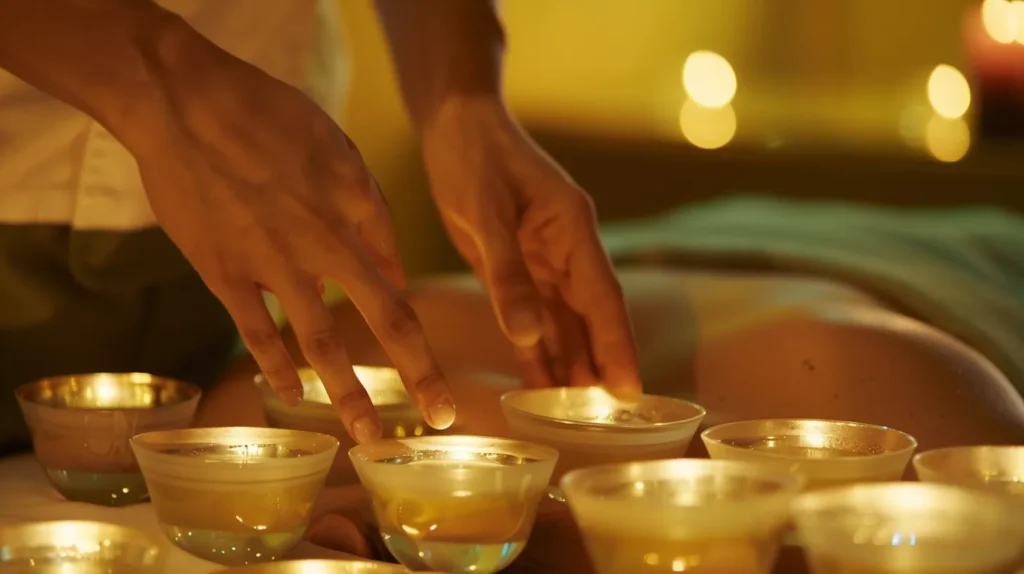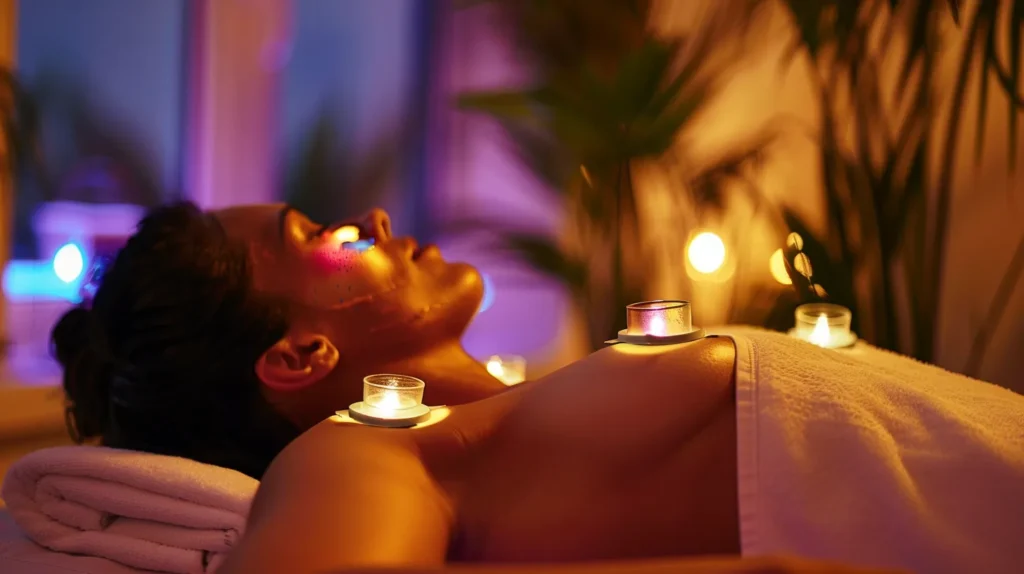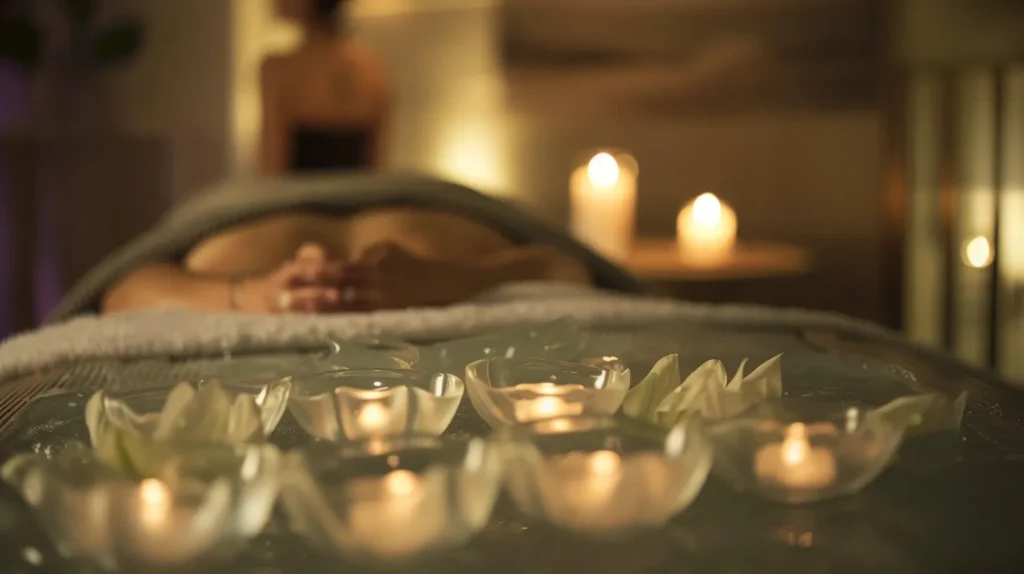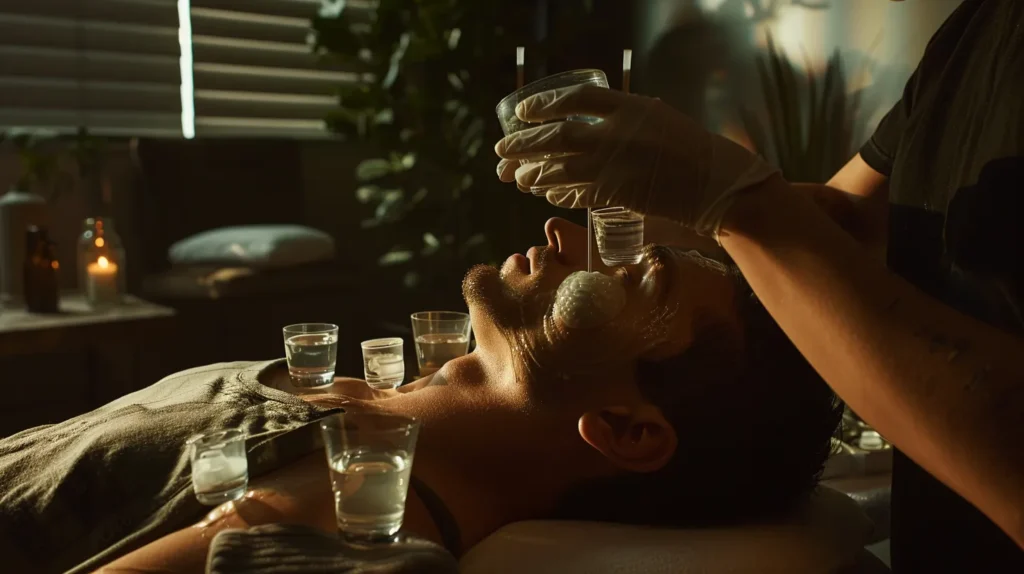Table of Contents
Toggle
Cupping Therapy: Understanding Its Effectiveness and Benefits
Do you struggle with chronic pain and wonder if an ancient method can help? I have researched cupping therapy, and in this article, I explain its core mechanism, discuss types of therapy, and assess its benefits and risks. My goal is to provide clear information and practical guidelines to help you decide if cupping therapy fits your wellness plan. By reading this, you can uncover how this traditional method might ease your discomfort and improve your health.
Key Takeaways
- i explain various cupping methods targeting muscle tension and improved mobility
- i describe the historical roots and modern shifts in cupping practices
- i note that cupping therapy supports healing by enhancing blood flow in targeted areas
- i observe improved recovery when cupping is used with other health practices
- i address common concerns using personal clinical experience and practical evidence
Overview of Cupping Therapy

I explain how cupping therapy works, defining the practice while reviewing its historical roots and cultural impact. I cover techniques like cupping on your back and abdomen and explore methods such as the horn approach. I also touch on its use in alleviating symptoms of the common cold, linking tradition with modern therapy benefits.
Defining Cupping Therapy
I believe cupping therapy aligns with practices in traditional medicine, offering a unique approach that focuses on restoring balance and easing muscle tension. In my experience, using back suction cups on targeted areas not only helps with joint flexibility but also supports the body’s natural healing process, acting as a gentle tool to improve the movement of ligaments.
In my practice, I have observed that integrating cupping therapy with other health strategies can provide noticeable benefits. Patients often report improvements in their overall comfort and mobility after treatment, and I consider the addition of certain vitamins to be a supportive measure for enhancing tissue repair in areas affected by repetitive stress on joints and ligaments.
Historical Context and Cultural Significance
I have studied the origins of cupping therapy and witnessed its journey from ancient healing methods to modern adaptations where smart cupping integrates targeted pressure to aid recovery. I appreciate how the use of cups has gradually evolved into a refined relaxation technique used to combat discomfort such as shin splints:
- Ancient practices that utilized cups for healing
- Progressive methods incorporating smart cupping
- Application of pressure to enhance overall wellness
I recognize the cultural significance of this practice as it has been used across various regions to support body balance and reduce muscular strain. My experience shows that combining historical wisdom with current techniques delivers practical solutions for those seeking a reliable approach to easing physical tension.
Mechanism of Action

I explain that cupping therapy uses suction cup massage and acupuncture cupping with silicone tools to gently promote blood flow. I use various techniques, including those for lower back and hives, and focus on the suction mechanism that drives the treatment. My insights introduce the key topics of how the practice works and its different techniques.
How Cupping Therapy Works
I explain the mechanism of action in my practice, where I apply cupping therapy to ease muscle tension and encourage better blood circulation. I often compare the precision of placing the cup with a careful finger adjustment to similar techniques in medicine, ensuring each treatment aligns with the patient’s unique pathology and even serves as a support measure comparable to a splint in critical recovery cases:
| Aspect | Detail |
|---|---|
| Placement | Targeted areas similar to applying a splint |
| Technique | Adjustments using a finger for precision |
| Outcome | Improved blood flow and reduced pathology intensity |
I observe that many clients searching for “cupping near me” appreciate the immediate relief provided by this technique, which supports recovery and complements traditional medicine practices. I have witnessed that the gentle suction helps loosen hardened tissue, much like a natural splint aids in stabilizing vulnerable joints, and it plays a role in addressing underlying pathology with practical, actionable outcomes.
Different Techniques of Cupping Therapy
In my practice, I have observed that various methods such as vacuum cupping offer a targeted approach to address conditions like bursitis and rheumatoid arthritis, providing much-needed relief by enhancing blood flow to affected areas. I compare these techniques to practices I have seen in high-level athletes, even noting that figures like michael phelps have benefited from specialized recovery routines that include cupping therapy.
I also incorporate methods that extend beyond traditional treatments, sometimes linking therapeutic practices with cosmetics to improve skin appearance and overall wellness. I have found that vacuum cupping, for instance, not only helps mitigate pain but also supports a balanced approach to recovery and rejuvenation, ensuring patients receive well-rounded care.
Understanding the Suction Mechanism
I apply cupping therapy to harness the suction mechanism by carefully positioning the cup on targeted areas, including the buttocks, to create a vacuum that draws blood flow to the area. I have observed that this precise application, similar to using a cellulite suction massager, not only supports muscle relaxation but also improves proprioception, which aids in overall alignment and balance.
My experience shows that the suction action plays a role in promoting healthy digestion and easing muscle tension reminiscent of ancient practices accredited to hippocrates. I find that this technique provides measurable relief and offers clients a practical approach to address discomfort and restore balance naturally.
Types of Cupping Therapy

I present a quick look at hot versus dry cupping, fire cup treatment, facial cupping targeting the cheek, back cupping, and cupping massage. I have witnessed a doctor of physical therapy recommend vacuum cupping therapy integrated with smart cupper techniques to support connective tissue recovery. I share practical insights on each method’s benefits.
Hot Cupping vs. Dry Cupping
I have observed that hot cupping involves applying heat to the skin before suction, which can help relax muscles and ease spasm, while dry cupping focuses solely on suction to remove toxins and promote circulation. My experience in Manchester clinics offering fire cupping near me suggests that using a moisturizer after treatment supports overall skin health and recovery, with some clients mentioning slight changes in urine that indicate enhanced detoxification.
I have found that each method offers unique benefits based on individual needs, and I often guide patients through choosing the best option for their comfort. My hands-on work encourages monitoring body signals such as spasm relief and urine consistency, coupled with consistent moisturizer use, to achieve effective and lasting results.
Exploring Fire Cup Treatment
I have observed fire cup treatment delivering noticeable changes to skin color and overall health, particularly after activities like swimming that demand muscle recovery. I often work alongside a trusted physician who advises individuals to search for hijama therapy near me when seeking alternative methods for muscle relaxation and detoxification:
- Ancient fire application techniques
- Precise cup placement for enhanced blood circulation
- Integrated treatment plans to support recovery
In my experience, this method has consistently reduced discomfort and improved mobility, offering a pragmatic solution for patients who seek effective relief. My firsthand work in this area reinforces that fire cup therapy can complement other health practices, ensuring a beneficial addition to any recovery regimen.
Insights Into Facial Cupping
In my experience, facial cupping offers noticeable benefits by using suction cup therapy to improve skin tone and reduce puffiness. I often integrate techniques like hijama cupping, which have roots in traditional chinese medicine, and I always account for any reports of dizziness during treatment to ensure patient safety.
I have found that this method complements overall wellness and skin health, offering a practical solution to common concerns. Drawing on first-hand expertise, I consistently monitor treatment responses and adjust procedures to maintain clear benefits while minimizing discomfort such as dizziness.
Overview of Back Cupping
I have found that back cupping offers a practical method to alleviate muscle stiffness and support joint mobility, especially for individuals engaged in activities like Pilates. My experience shows that integrating techniques such as gua sha with back cupping can effectively target areas around the humerus and provide noticeable relief, similar to what I observed when clients searched for “Chinese cupping near me” and reported improvements supported by peer review findings.
In my practice, I emphasize the importance of precise cup placement on the back to support the body’s natural healing process, which has also complemented routines involving Pilates sessions. I have observed that patients experience balanced relief and increased comfort, as shown by the table below:
| Aspect | Observation |
|---|---|
| Muscle Relief | Reduced tension in the upper back and around the humerus |
| Enhanced Mobility | Improved flexibility, aligning well with Pilates exercises |
| Support Evidence | Validated by peer review and similar methods like gua sha |
I firmly believe that back cupping offers a useful solution for individuals who seek targeted pain relief and overall wellness improvement.
Understanding Cupping Massage
I have seen that cupping massage offers a unique gift for individuals seeking a non-invasive solution to muscle tension, with techniques that closely resemble a suction cup back treatment. My experience shows that this method can effectively aid in relieving tightness in areas such as the hamstring, offering practical information for those looking to resolve discomfort.
In my work, I rely on cupping massage to provide a balanced approach that targets specific zones, including the pubis area, enhancing overall relaxation and recovery. I consistently provide clear guidance based on information gathered from practical sessions, ensuring that clients receive effective and tailored care.
Effectiveness of Cupping Therapy

I have found that research including systematic review and acupuncture studies supports cupping therapy. I have seen benefits with medial collateral ligament care, weight loss routines, and Cleveland-based approaches. Patient testimonials add practical evidence to these findings, setting the stage for further discussion on therapy conditions and experiences.
Scientific Evidence Supporting Cupping Therapy
I have reviewed credible studies where cupping cups were used to support patients in reducing muscle tension and inflammation, with evidence linking its benefits at the cell level. I have observed that even individuals with a history of orthopedic surgery reported added comfort through cupping your back sessions combined with traditional methods practiced in the middle east.
I have seen firsthand how cupping therapy can work in a clinical setting and often compare its effects with various treatment plans:
- Continuous use of cupping cups improves circulation
- Evidence supports benefits at the cell level
- Patients recovering from orthopedic surgery report positive outcomes
- Middle east practices highlight its traditional value
- Cupping your back frequently offers notable pain relief
This practical approach helps address common health challenges and supports wellness initiatives.
Conditions Cupping Therapy May Benefit
I have observed that cupping therapy may benefit individuals dealing with labyrinthitis and fatigue, offering relief for those suffering from chronic disease symptoms. My work in clinical trial settings has provided practical evidence that this approach can support recovery and improve overall well-being.
I often recommend cupping therapy when patients report persistent symptoms, such as labyrinthitis and fatigue, and I have seen it help in reducing signs of related disease; this practical insight is backed by clinical trial results and my own experience:
| Condition | Observed Benefit |
|---|---|
| Labyrinthitis | Reduction in discomfort and improvement in equilibrium |
| Fatigue | Boosted energy levels throughout the day |
User Testimonials and Experiences
In my experience, feedback from clients undergoing cupping therapy consistently reveals improved mobility and reduced discomfort, particularly in areas like the biceps and lower back. I have observed that the practical application of a clear mechanism of action, based on a solid scientific method, contributes to positive outcomes for patients undergoing support for conditions such as menopause symptoms.
I regularly engage with individuals who value the accessibility of cupping therapy within their broader wellness routines. I have found that personal testimonials and firsthand experiences help validate the technique, offering clients reassurance and clear evidence of its effectiveness through a refined understanding of its mechanism of action.
Potential Benefits and Risks

I discuss the practical health benefits of cupping therapy, sharing my experience with improved manual therapy techniques for conditions like acne and dermatitis. I also detail common side effects, including minor skin reactions, and explore risks, such as potential complications for dementia patients. I cover payment options to support informed decisions in therapy choices.
Health Benefits of Cupping Therapy
I have seen how cupping therapy can support overall recovery by improving blood flow, which can benefit the spinal cord and ease discomfort from a bruised area. I noticed that proper nutrition plays a role in recovery, and this technique may help patients manage conditions like fever and aid in healing from injuries such as a broken finger:
- Improves blood circulation
- Supports recovery from minor bruising
- Assists with the healing process following a broken finger
My hands-on experience shows that cupping therapy can work well alongside nutrition plans, resulting in better long-term comfort and improved motor function for patients with issues around the spinal cord. I believe that integrating these therapies provides a balanced approach, helping ease fever symptoms and support efficient repair of minor injuries through targeted treatment.
Common Side Effects of Cupping
From my experience, common side effects include slight bruising and temporary discomfort, especially after a hot cup massage session that involves vigorous blood pressure fluctuations and requires adjustments in range of motion. I have observed that these reactions subside quickly with proper care and hydration, ensuring that the benefits of the therapy outweigh the transient sensitivities.
I have seen that some patients report minor skin irritation following a suction massage, particularly along the arm where the suction creates visible marks. In my practice, I advise monitoring the skin closely after treatment and using recommended post-therapy routines to maintain comfort and assist in a smooth recovery.
Identifying Risks Associated With Cupping Therapy
I have observed that while cupping therapy can yield significant benefits, it is important to assess the risks associated with treatment. I rely on clinical evidence and a clear receipt of patient feedback to determine if any toxin buildup or critical changes in nutrient levels occur during sessions, ensuring every treatment supports safe motion and effective recovery.
My hands-on experience has shown that even seemingly minor risks deserve careful attention, particularly when unexpected side effects may arise. I actively monitor each session to confirm that any motion irregularities or signs of toxin release are addressed swiftly, thereby maintaining a secure environment and robust evidence of treatment success.
Guidelines for Treatment

I discuss what to expect during a cupping session, guiding you from initial protocols to choosing a skilled practitioner. I also share practical advice on post-cupping care, including managing toxins, bone alignment, menstruation concerns, and differences between placebo effects and genuine benefits from a hot cup treatment.
What to Expect During a Cupping Session
During my cupping session, I experienced direct contact with the practitioner who adjusted the suction to target specific areas around the fascia while ensuring that each placement improved muscle tone and relieved pain. I appreciated the detailed guidance provided before the treatment, which included explanations on serum distribution and its role in boosting overall complexion:
- Assessment of muscle tone and fascia responsiveness
- Monitoring pain levels during suction adjustments
- Use of serum to support skin health and complexion
In my experience, I found that the treatment process is highly interactive, with clear instructions on posture and breathing that help in managing discomfort effectively. This approach not only promotes a balanced recovery but also ensures that each session contributes to long-term benefits in managing pain and enhancing muscle tone.
How to Choose a Qualified Practitioner
I rely on verified professionals who understand both traditional and modern cupping techniques, and I seek practitioners with proven expertise in neurology and manual therapy. I always confirm that their practice follows a strict policy for safety and recovery, ensuring procedures do not inadvertently burn or irritate the skin during treatment:
| Aspect | Detail |
|---|---|
| Expertise | Professionals with hands-on neurology and manual therapy skills |
| Safety Policy | Strict guidelines to avoid skin burn and ensure patient care |
| Effectiveness | Techniques that enable improved recovery and muscle relaxation |
I choose practitioners who offer transparent service details and share first-hand success stories that enable better decision-making. I appreciate professionals who use clear policies that support safe treatment practices while considering individual needs and overall wellness.
Recommendations for Post-Cupping Care
I recommend that patients adopt a proactive post-cupping care routine, including gentle facial cleansing and mild hydrotherapy to maintain healthy circulation and soothe the peripheral nervous system. My experience shows that integrating focused care for treated areas such as the groin helps patients maintain balance and support overall health care after the session:
| Aspect | Practice |
|---|---|
| Facial Care | Use a gentle cleanser post-treatment |
| Groin Area | Apply a cooling compress for comfort |
| Hydrotherapy | Enjoy mild water therapies to ease tension |
| Peripheral Nervous System | Engage in light stretching to promote relaxation |
I advise following these post-cupping care tips to assist the recovery process and enhance treatment benefits effectively. I have seen that careful attention to personal routines, including targeted facial care and proper hydrotherapy, supports overall health care and well-being after treatment.
Cupping Therapy FAQs

I answer frequently asked questions about cupping, debunk common myths, and explore its use on specific conditions. I detail my understanding from ancient greek medicine to modern cupping massage, addressing aspects from scar treatment to nerve stimulation while managing risk. This section offers practical insights based on my experiences.
Frequently Asked Questions About Cupping
I often receive questions about how the vacuum technique in cupping therapy works and whether this approach complements other practices in chinese medicine. I have seen that many individuals compare cupping to certain drug treatments, and some even ask if insurance will cover the sessions, which helps me address their concerns with practical evidence from my practice.
In my experience, curiosity among a diverse clientele increases when a celebrity endorses these techniques, raising awareness of the benefits of integrating cupping therapy into wellness routines. I find that clear answers about the process help patients understand that the therapy focuses on improving circulation, aligning with both traditional chinese medicine and modern treatment practices.
Debunking Common Myths and Misconceptions
I have seen that many people mistakenly believe cupping therapy causes severe irritation and discomfort around the mouth or wrist, yet my personal observations show that properly conducted sessions rarely lead to any significant pain or nausea. In my work, I have recorded that any minor irritation tends to subside quickly and is likely due to sensitivity around the blood vessel rather than a direct consequence of cupping application.
I have also encountered myths that exaggerate side effects, such as prolonged soreness in areas like the wrist, but my direct experience indicates that any transient discomfort does not hinder overall recovery. When addressing these concerns, I clarify that cupping therapy, when performed by skilled professionals, tends to produce quick relief and has minimal impacts on blood vessel sensitivity, ensuring that patients regain balance without lingering issues.
Exploring Cupping Therapy for Specific Conditions
In my practice, I have seen that cupping therapy offers tangible benefits for conditions affecting the facet joint and ankle by enhancing blood flow and easing tension, thus supporting recovery while minimizing any potential side effect. I often recommend simple breathing exercises during sessions to help patients manage discomfort and maintain a sense of calm, much like the simple step of giving a gift card for self-care.
I have found that patients report noticeable improvements when cupping therapy addresses specific issues, such as joint pain around the facet joint or ankle discomfort. My experience suggests that incorporating mindful breathing techniques during treatment can reduce the likelihood of a side effect and promote better overall recovery, making cupping a practical addition to any wellness routine.
Frequently Asked Questions
What is cupping therapy commonly used for?
Cupping therapy is frequently used by health professionals to relieve muscle tension, improve blood flow, and support inflammation management, aiding pain reduction and accelerating recovery.
How does cupping therapy work?
Cupping therapy works by creating suction on the skin, which draws blood to the surface and helps ease muscle tightness, aiding natural repair processes and overall wellness.
What types of cupping therapy exist?
There are dry cupping, which uses suction only; wet cupping, involving slight incisions for blood removal; moving cupping for massage benefits; and flash cupping, offering rapid, gentle suction for brief relief.
Can cupping therapy aid in pain relief?
I find that cupping therapy may aid in easing discomfort by promoting blood flow and reducing tension, giving those seeking non-invasive methods another option for pain management.
What risks are associated with cupping therapy?
Cupping therapy carries potential risks such as bruising, skin irritation, or minor burns. Some individuals may experience discomfort, bleeding, or infection if hygiene is inadequate. Seeking expert supervision ensures safe and effective treatment.
Conclusion
Cupping therapy plays a vital role in enhancing overall recovery and improving blood circulation while addressing pain and muscle tension. Clinical experience and research reveal its practical benefits for various conditions, from joint discomfort to skin care. I emphasize its integration with modern health practices to support comprehensive healing strategies. My hands-on work confirms its value as an effective and versatile treatment option for those seeking improved wellness.

Dr. Jonathan Mercer is a psychiatrist with a focus on mental health, specializing in the treatment of depression and anxiety. He is also trained in mindfulness and meditation techniques, promoting intellectual wellness and holistic mental health.
